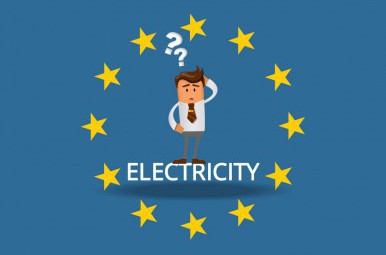28 April 2016
European electricity market: myths and realities


There seem to be numerous misconceptions as soon as the European electricity market is at stake! Though only few European citizens know what the electricity bill really covers, many have a biased view on the very functioning of the European electricity market, of its consequences on the bill or of the sector’s companies. Hence the interesting note published by Eurelectric on April 15th on the ‘Myths and Realities of the European Electricity Retail Market’ …
On the eve of the presentation made by the European Commission of its electricity market reform, and in particular of its retail market, is it indeed quite worrisome to note that misconceptions are well-spread. Yet, the future reform must focus on, and address the structural challenges that undermine the well-functioning of the electricity market, instead of referring to consumers’ erroneous visions of the reality.
1st myth: energy bills increase due to rising company profits
False: the overall retail price rise occurring throughout the European Union stems essentially from the impact of taxes and charges imposed by public authorities. On the contrary, the financial situation of European utilities keeps getting worse.
2nd myth: consumers do not see the benefits of decreasing wholesale electricity prices in their bills
False: in continuity with the previous point made, the decreasing wholesale prices impact much less the consumers’ bill than transmission and distribution costs, and mostly the level of taxes. Utilities are therefore unable to pass on the decrease of retail prices to their consumers strictly speaking.
3rd myth: low switching rates prove that competition is not working
False: switching rates cannot be considered as the sole indicator of market functioning. Indeed, consumers might decide not to switch from one supplier to another because they feel pleased with their current one, particularly if they are satisfied with the quality of service provided or perceive the potential gains of switching being too limited. Furthermore, consumers sometimes change offers whilst keeping the same supplier.
4th myth: consumers across Europe are not satisfied with electricity companies
False: satisfaction is quite high or improving in numerous European states. This is notably the case in Belgium, Finland, France, the Netherlands, Sweden, etc.
5th myth: electricity suppliers are opposed to self-production, energy efficiency and energy cooperatives.
False: suppliers’ strategies and business models are profoundly evolving, largely developing new products and services (demand response, self-generation, battery storage, energy efficiency including building renovation, financial contribution…)
6th myth: suppliers are making bills more complex on purpose to confuse consumer
False: in face, despite suppliers’ constant dialogue with their consumers in order to make billing more transparent, bills’ setting remains mostly imposed by regulators. Instead of trying to impose a uniform content on the bills, the European Commission should thus introduce principles encourage clarity and transparency.
Without further listing misconceptions about the electricity market, it becomes clear that the biased perception that European citizens may have of the electricity sector and their suppliers finds its roots in the structural deficiencies of the market, which have a knock-on effect on the situation that companies face and… on the final bill of consumers, without any of the two parties benefiting from it!
(Myths and Realities of the European Electricity Retail Market’, EURELECTRIC, April 2016.)
Find out more
02 June 2020
“Long live Europe”: it’s time for Europe!
25 February 2020
Brexit: love last 47 years


About us
The Union of the French Electricity Industry is the trade association of the French electricity sector. We bring together companies from the whole value chain of the electricity industry.
Find out more










